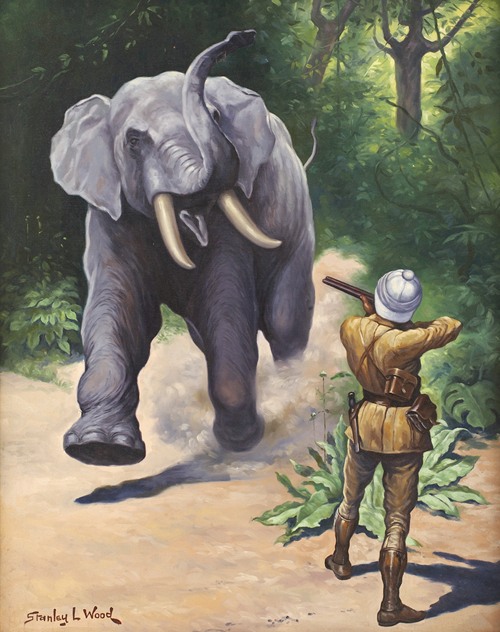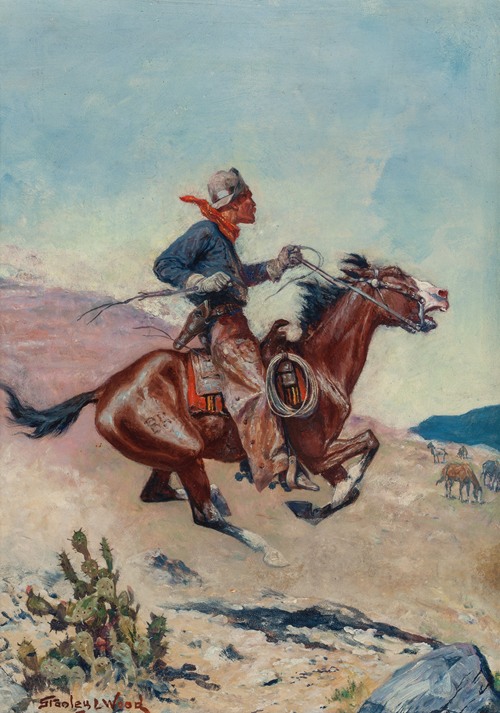
Stanley Llewellyn Wood was a prolific Welsh illustrator who travelled widely. He was known for his portrayals of horses in action and also for his black-and-white illustrations for the Captain Kettle stories by C. J. Cutcliffe Hyne.
Wood's Birth Certificate shows that he was born in Christchurch, Newport, Monmouthshire, Wales, on 10 December 1866. His parents were Stanley James Wood (c. 1839 – 27 May 1877), a cement manufacturer and entrepreneur, and Charlotte Atkins (c. 1839 – ). Wood's father was declared bankrupt in 1861, and was before the bankruptcy court again in 1869. Wood was the last of five children, and the only boy.
In 1873, George Grant, a Scottish silk merchant in London bought some 77 square miles of land in Kansas and proposed to set up an English colony there which he called Victoria. Wood's father sunk his money into the scheme and the family travelled to Kansas in 1873, when Wood was five or six years old. Grant had made him commissioner of streets in Victoria as an inducement.
When the family arrived in Victoria they found, not the bustling colony they had been promised, but a single two-storey stone building, the railway station, which also functioned as a hotel. Many of the other colonists were young men who were on allowance from their families, and were more intent on enjoying themselves than farming. The family found the carousing of the young men, and of the local cowboys, was intolerable and fled to Kansas City, with the very last of their money. Wood's father got a job with the Union Pacific land department at Lawrence, Kansas and the family moved and the children attended school there.
However, their hardships were not over. Still seeking his fortune, Woods' father left his job in Lawrence and began to travel around Kansas demonstrating a patent well-digging auger. He was demonstrating the auger at a farm near Wichita, Kansas on 27 May 1877, when he experience some symptoms that made him rush to the doctor's office. He died in the doctor's office at 4pm, just as they began to try and treat him. The family's troubles were not over though. They were living in a ranch-house outside the town where the former occupants were buried in the garden after being killed in an Indian raid. The new widow was horrified to find one night that a party of Indians had surrounded the house and she had the children put on boots and clump around and bang doors so that those outside would thing there was a part of cowboys in the house. The family immediately returned to England, although Wood visited Lawrence several times in later life, and his mother visited at least once.
The 1881 census found the family at 4 Mornington street, apart from the eldest Amy Phoebe (Oct 1860- – 1902). Wood's second eldest sister Jessie M. was an artist's apprentice at the time. She later travelled to New York to work for the Redfern fashion house as a designer. Eventually she became the drama critic of the New York Journal at a salary of $250 a week, and illustrated her reviews with her own illustrations.
More Artworks by Stanley Llewellyn Wood


